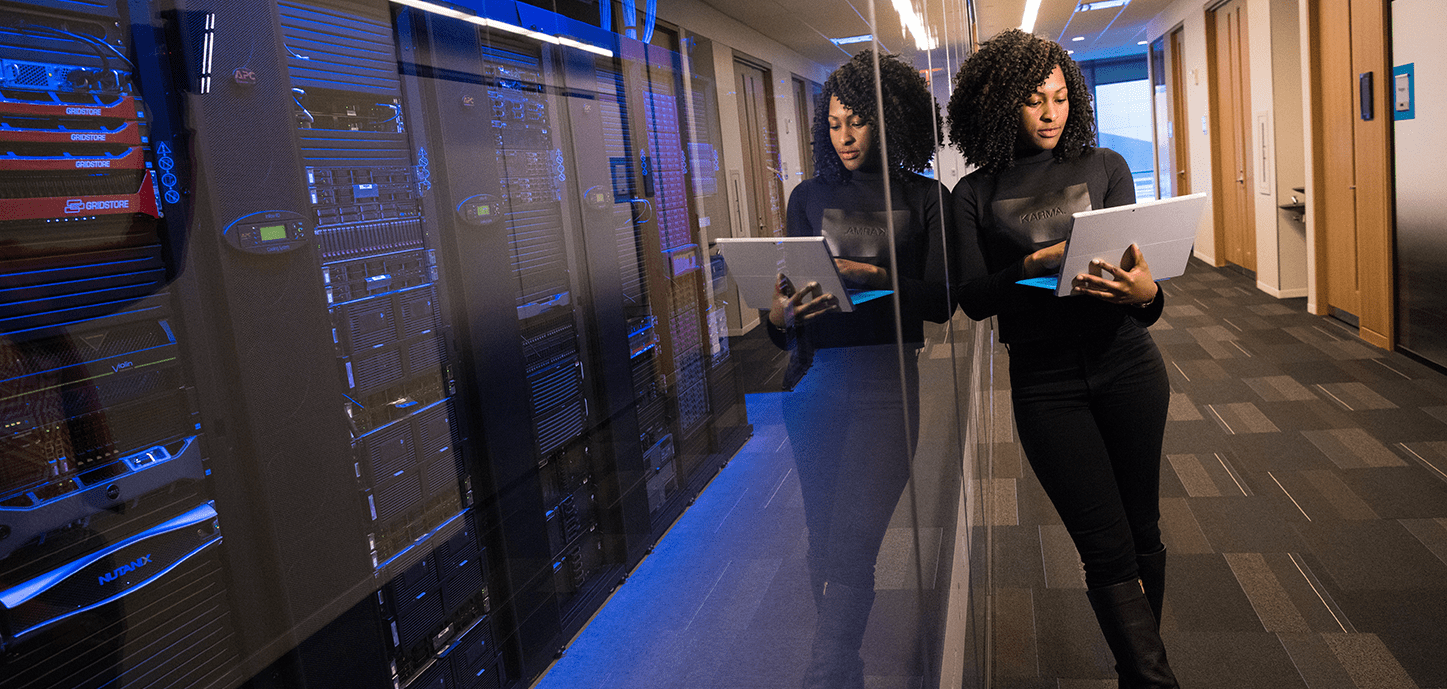
New technologies are taking the world by storm.
But what tech trends will sneak into tomorrow’s workplace?
1. Social upgrade of corporate software
Since the hybrid model has come to stay, companies now need to invest in a solid software stack that upholds the corporate culture. Top talent will continue to want to work remotely more and more in the future, coupled with top salaries.
In doing so, it’s imperative for companies to provide their employees with the right tools to facilitate remote work and optimize their recruiting campaigns.
Zoom fatigue has now hit nearly all employees. That’s why employers now need to provide a range of online tools to keep everyone connected. We can expect to see more hybrid work tools hitting the virtual shelves. It is also likely that these software tools will encompass a larger portion of the workday, as they will help businesses in every way possible.
2. Cybersecurity
Remote work has many sunny sides, but it also has its dark spots. Cybercriminals are exploiting the vulnerabilities that remote work brings to many organizations. In the process, data breaches are predicted to grow in size and cost, increasing not only in scope but also in complexity.
For businesses, this means prioritizing cyber hygiene while providing employee training. To keep everyone safe and online, a plethora of security solutions must be deployed.
Above all, it’s about detecting and responding to cyber threats. However, when it comes to monitoring employees’ online activities, companies must proceed with caution. Companies must be careful not to trigger a backlash from employees by going too far with their monitoring, thereby triggering a decline in technology satisfaction and a lack of employee engagement.
3. Metaverse
With the metaverse, VR/AR technology has managed to enter the mainstream. Global Data analysts predict said technology could be as revolutionary as the iPhone in 2007, and already there’s no shortage of headlines.
Research shows that VR in the workplace can reduce employee training time by 60%, meaning VR could help foster a more productive workplace culture. VR technology aims to make a user’s interaction with the digital world more seamless and intuitive. While adding direct value to the business, VR also provides a competitive advantage.
4. Artificial Intelligence
Resentment toward AI was once high. It was often discussed whether it would steal human-occupied jobs. Today, however, it is seen to be more about supporting humans than replacing them. For example, AI can help HR professionals streamline the hiring process by providing support from recruitment to screening. However, concerns about technology bias remain and need to be addressed.
Further, natural language processing is expected to continue to mature and help employees in offices around the world have a more personal and human-like experience. Conversational AI technologies offer the potential to provide a highly personalized yet human experience.
A first-of-its-kind AI employee in the enterprise? In today’s digital and physically distant world, you might not even notice the difference.
5. Blockchain
Whether we like it or not, Blockchain is ready for business. Cryptocurrencies and blockchain are decentralized processing and record-keeping systems. They are changing the way business is done and helping companies rethink the way they manage physical and digital assets. Industry-wide, opportunities are suddenly opening up to develop new business models that transform the value creation of all types of physical and digital assets and streamline business processes across organizational boundaries.
For coworking spaces, all of this is quite interesting. They can be rented, sold and managed with cryptocurrency – the only premise is that the currency is created with blockchain technology. Thus, the blockchain acts as a decentralized ledger of all transactions in a peer-to-peer network. Participants can confirm transactions without the need for a central clearinghouse.

The big question now is: Who will develop this technology in 2022?
As we have all noticed, the world of technology is just adapting to our increasingly hybrid way of working. Global IT expenses are rising and will continue to do so. Unfortunately, the talent shortage in the IT industry is also rising. But the solution to this skills gap could fittingly come from the remote workforce. Freelancers will play a big role in filling talent gaps.
So, it can be noted that the hybrid workforce will force an improvement in technology this year. Moreover, these hybrid workers are perfectly capable of reskilling and filling skill gaps. Demand for hybrid jobs will increase, spurring demand for hybrid technology solutions.

Technology all well and good you’re thinking now, but how can a digital workplace experience be implemented?
When we talk about a digital experience in the office, we’re talking about more than just seat reservations. The digital workplace experience needs to move with the time and be just as changeable. It’s about getting people working productively, keeping workplace culture alive, collaborating in new ways, and fostering career growth.
The basic principles of the digital workplace experience can be broken down into three areas:
1. Visionary and modular
A company should recognize the evolutionary path, from investment to a people-centric, productivity-based utopia of remote work. Here, it is important to cover the employee experience, regardless of location. Companies should choose a platform that allows them to quickly get the most important tools into the hands of employees and expand their experience over time. This may be about fostering collaboration and equity in a hybrid environment or connecting employees with smart building features to create a more human-centric workplace.
Whichever solution is chosen, it should help the company realize its vision and move forward. A one-size-fits-all approach is best avoided because it is limiting and not agile.
2. Centralization of experience
Which app was that again? Nearly 43% of employees report spending up to an hour per day searching for information in multiple apps. Instead of constantly switching back and forth between different tools, bring them all together and make them accessible from a single hub.
This could be called a digital command center, which aims to provide a centralized and holistic digital experience of the workplace. Employees should have access not only to hybrid work tools, such as desk reservations and health certificates, but also to collaboration and navigation tools, such as Slack, Zoom, Teams, and many others.
3. People first
People need more than productivity tools to stay engaged. That’s why the digital workplace experience must also foster collaboration, engage people in the company culture, and advance their careers.
For example, platforms can foster collaboration by allowing employees to sync office schedules and seating with colleagues and friends, and access virtual meeting spaces. Profiles can be connected in the process, through interest groups, social sharing, and gamification. However, digital experiences should be site- and staff-specific so that everyone receives their own tailored notifications, information, tools, and services.
We live in a time of digital transformation. Companies are seeking and sharing insights like never before. Leading companies are the ones leading digital responsibility. They need to create a culture of continuous learning and always keep their employees up to date.
Digitization and technology innovation are not a threat to working people, but an opportunity. In the past, it was difficult to make the value proposition of making changes to technologies; they were seen only as an investment with no obvious benefits. Nowadays, however, people see the potential of developing a work culture that supports employees’ work-life balance and motivates them no matter where they work from.
Technology helps people work smarter by allowing them to connect across boundaries at once, work in teams on projects, and still keep everything under control. It has a positive impact on work and increases both output and revenue.
In conclusion, it takes a holistic approach that integrates technology in a meaningful way. Companies should foster trust by developing change management and communication strategies that help people change and understand the impact of technology on their work lives.






